Frequently, individuals become captivated by an animal and believe it would make a great pet. However, this is not always the best decision for the creature involved. This occurrence is common with birds, as they are captivating and lovely, resulting in their capture for sale in the exotic pet industry.

The capture of birds for the pet trade causes negative effects not only on the birds but also on their ecosystem. Reports suggest that the survival rate of parrots captured in the wild is only 1 in 6. This situation applies to other bird species as well. Nonetheless, there are individuals who are dedicated to breeding and safeguarding endangered bird species. These advocates release the birds back into their natural habitats to revive their dwindling populations or introduce them to new environments where they can prosper.
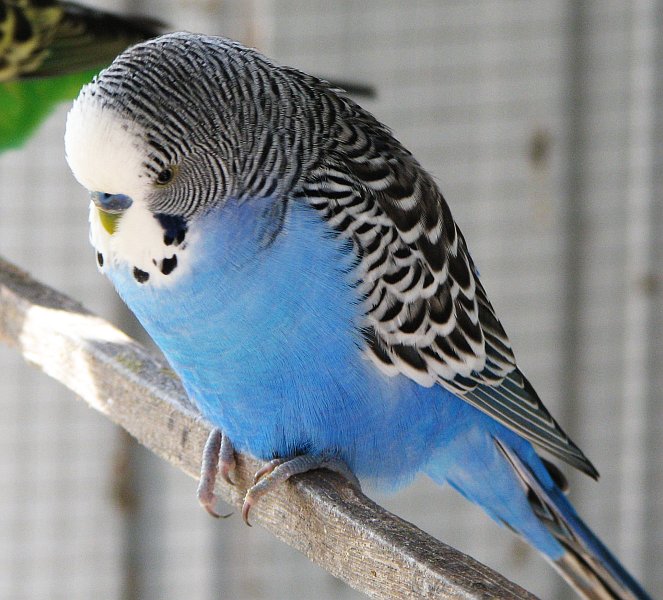
The violet budgerigar mutation is one of many mutations that can affect the color of budgerigars, also known as budgies. It is a part of the violet variety and produces a distinct visual effect in birds that carry it. The impact of the mutation depends on whether it is single or double, as well as the presence of other mutations like dark and blue. There are 18 different combinations of these mutations, but only three of them meet the exhibition standard for the violet color.
Budgies are popular pet bird species because they are easy to take care of and tame. They are affectionate and friendly and make great pets for busy owners or those living in smaller spaces such as apartments. Additionally, budgies can be trained to talk and perform tricks due to their intelligence.
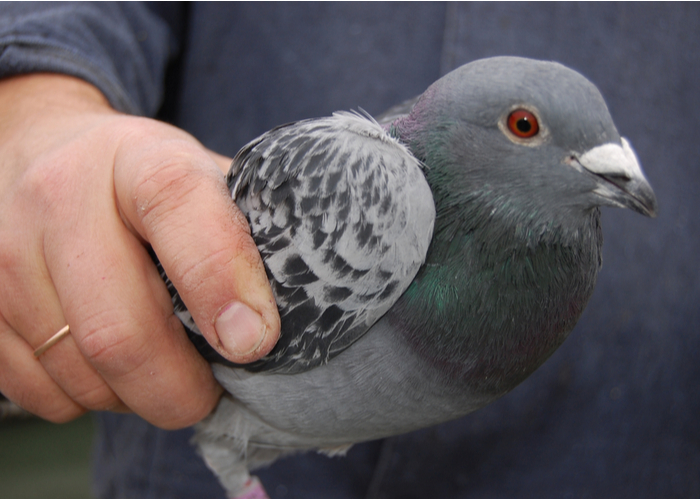
When it comes to finding a friendly pet bird, many people may not immediately think of the dove. However, doves are actually quite easy to domesticate and are known for their gentle and sweet nature. Unlike other birds, they rarely show any aggression or bite. Additionally, training your dove should be a breeze as they are happy to receive attention from their owners but don’t require as much as some other bird species.
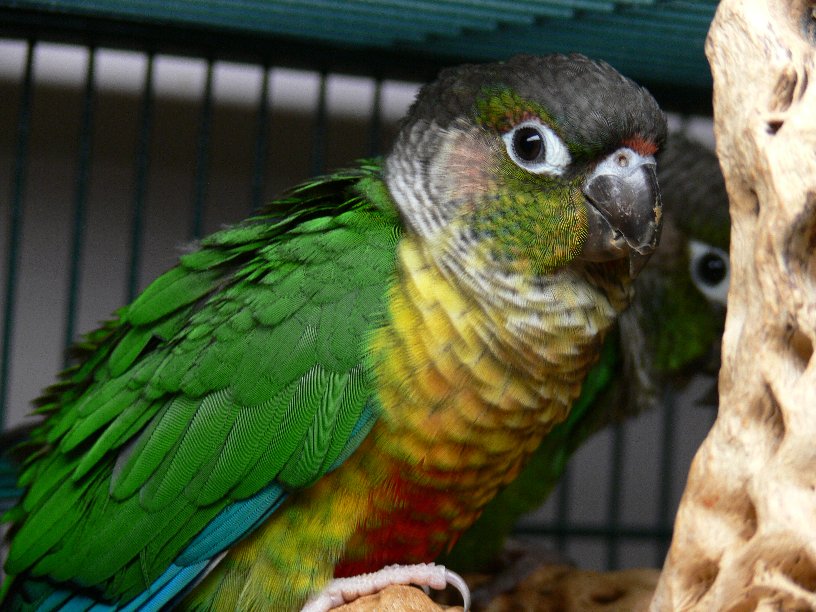
The Green-Cheeked Conure is a South American bird that is popular for its friendly and easy-to-handle nature. Among the various conures, this species stands out as one of the most social birds. With their playful and curious personalities, they are intelligent and sometimes even mischievous. Despite this, they are also laid-back and enjoy affection from their owners. Although they are not known to be talkative, there are a few exceptions. Nevertheless, their charm and appeal make them ideal pets for those seeking a friendly avian companion.
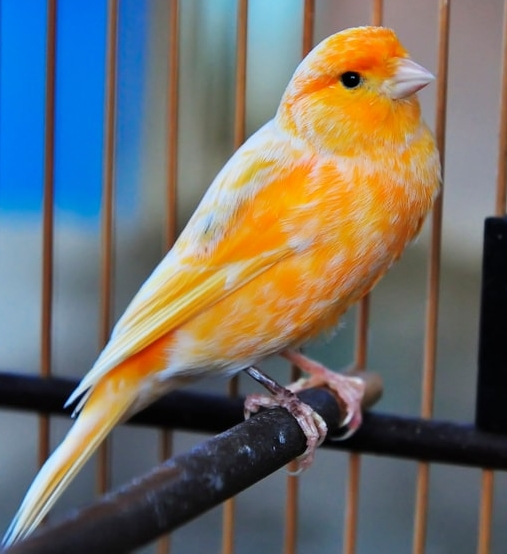
If you’re planning on keeping a Canary, it’s important to provide them with enough space to fly around. It’s recommended to get a cage that’s at least 2-3 feet tall. Make sure to set up the cage with perches at different heights and provide your pet with a couple of water bowls – one for drinking and another, larger, shallow one for bathing. When it comes to feeding your Canary, commercial pellets are a good option, but you can also supplement their diet with vegetables like kale, spinach, and sweet potatoes. Canaries don’t necessarily need feathered companions as they are not the most sociable birds, but most enjoy being in the same room as their human and being talked to.
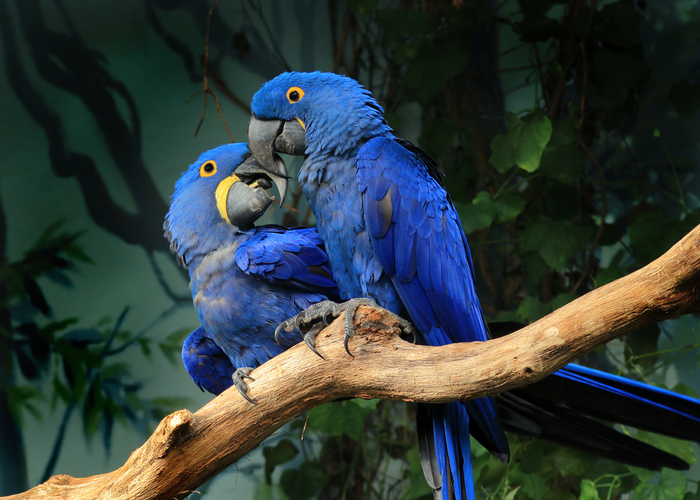
The Hyacinth Macaw is a spectacular bird that is not only beautiful but also one of the largest birds that you can raise. These birds enjoy socializing and are playful creatures. They love nothing more than cuddling with their owners. However, due to their size, which can reach up to 40 inches in length and weigh over 42-51 ounces, you must ensure that you have enough space to accommodate them. If you can provide sufficient space, these friendly giants will be worth the effort.
Although Owls may not be your first choice when considering pet birds, after reading this article, they might be at the top of your list. It can be challenging to find owls in many areas, but if you have the opportunity to raise them, you should grab it. Owls are adorable creatures with big eyes that are kind-natured and loyal. Those who raise owls typically have rehabilitation licenses that enable them to raise injured owls. To have a friendly owl, you must have patience and interact with your owl regularly while training it to your presence. Barn owls and snowy owls are two of the best options for raising loving and friendly pet owls.
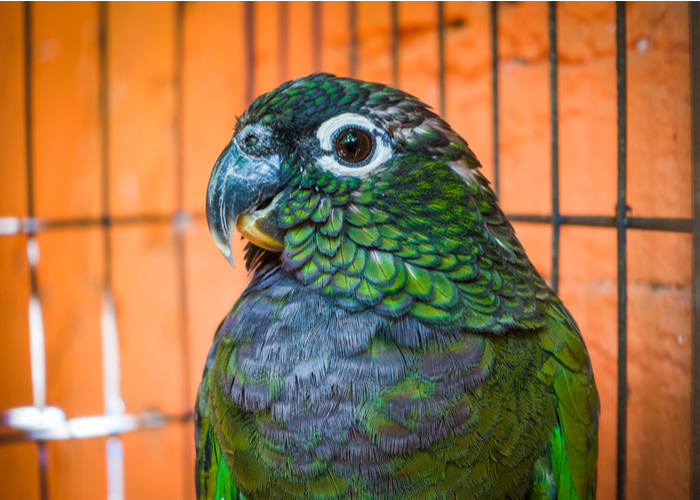
Hahn’s Macaw is not only visually appealing, but it is also known to be a friendly pet bird. Owning macaws is desirable for many reasons; however, their size can intimidate some potential pet owners. Fortunately, Hahn’s Macaws are smaller than other macaw species, measuring only 12 to 14 inches in length, yet still possess a remarkable personality. These intelligent and playful birds can be gentle and social when they receive regular interaction and socialization. Adequate social activity is necessary as they can easily become depressed if they do not receive enough attention. Nonetheless, it is important to note that they can also be loud.
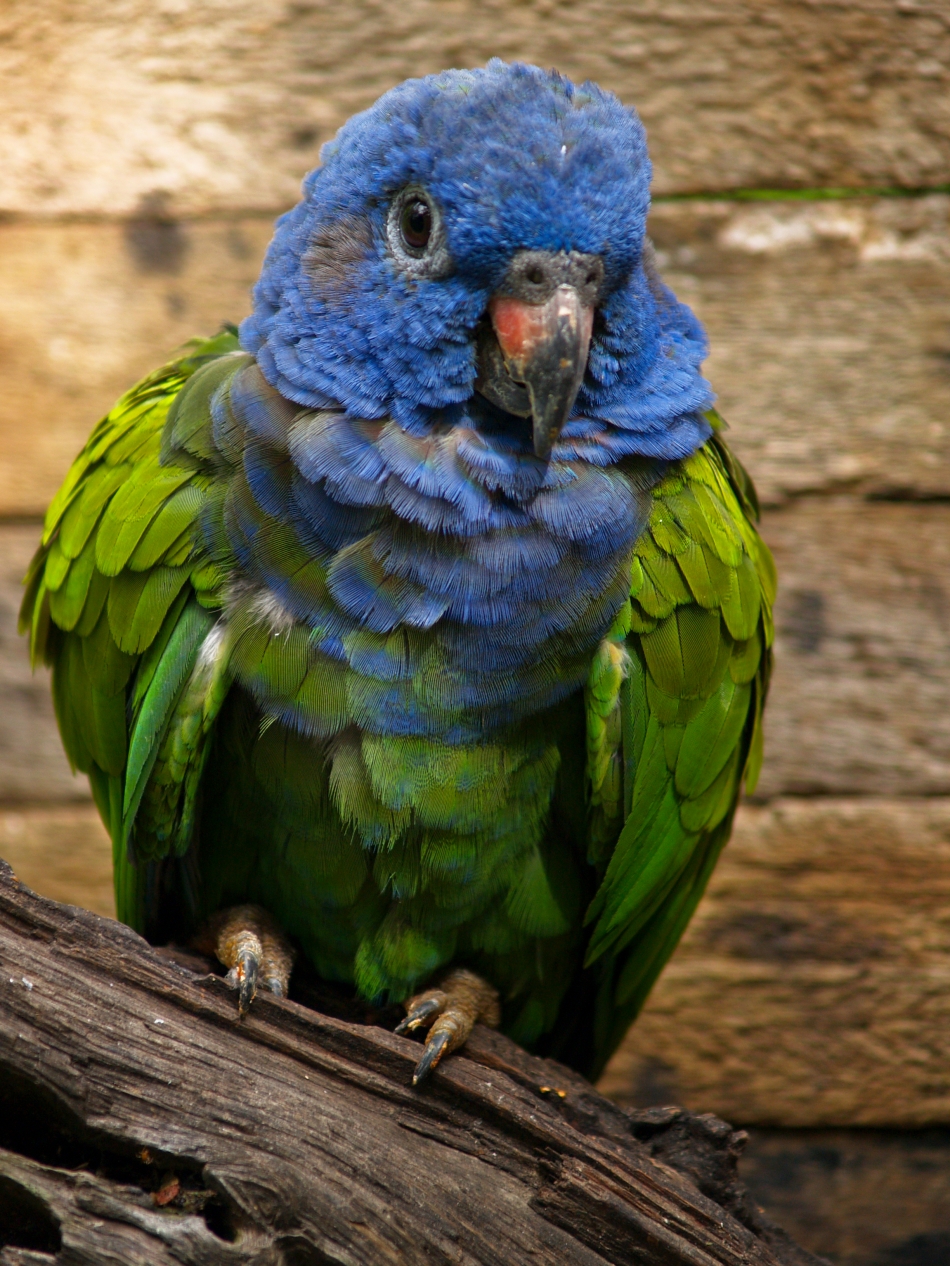
If you’re searching for a pet bird that will be a loyal companion for the long haul, consider getting a Pionus parrot. These friendly birds can live up to a remarkable 40 years – significantly longer than your average family dog. Growing to approximately 10 inches in length, Pionus parrots are fond of playtime and won’t form an exclusive bond with just one member of your household. This is excellent news for families with several members as all can enjoy a loving relationship with their feathered friend.
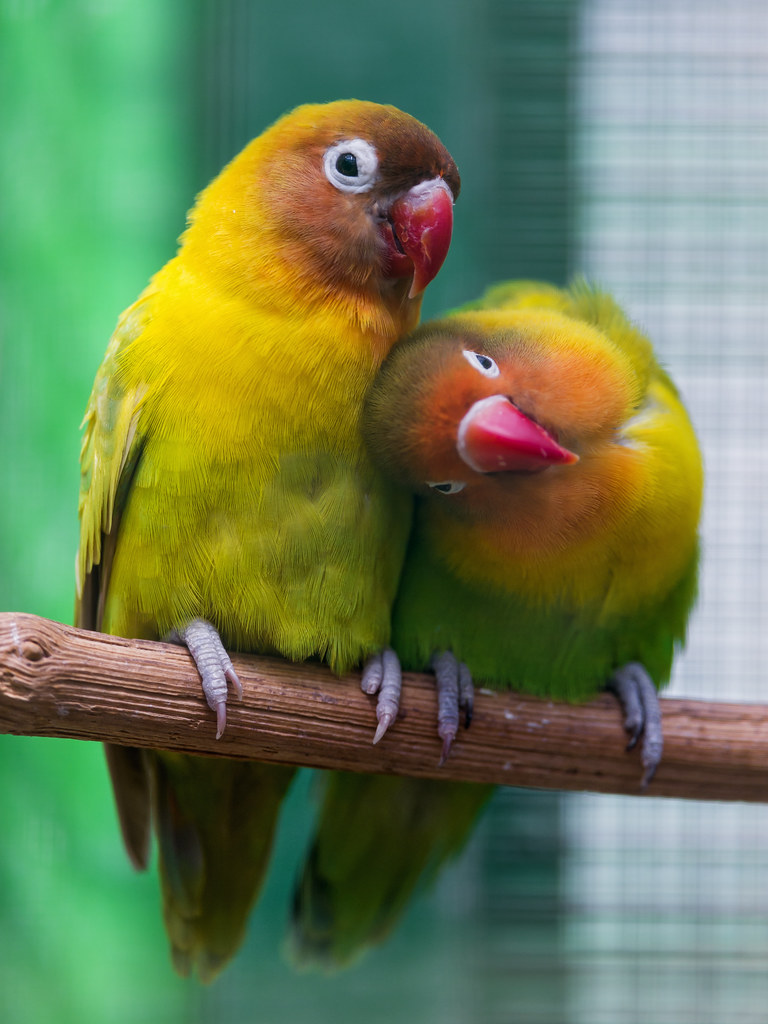
The Lovebird: A Friendly and Loving Pet Bird
Looking for a pet bird that will shower you with love and affection? Look no further than the lovebird! As their name suggests, these birds are known for their friendly personalities and ability to form strong bonds with their owners and other feathered or non-feathered friends. Not only are lovebirds great companions, they also have stunningly beautiful feathers and are low-maintenance when it comes to care. Just remember to provide them with a water bowl for bathing a few times a week, which not only keeps their feathers clean but also provides some playful entertainment.
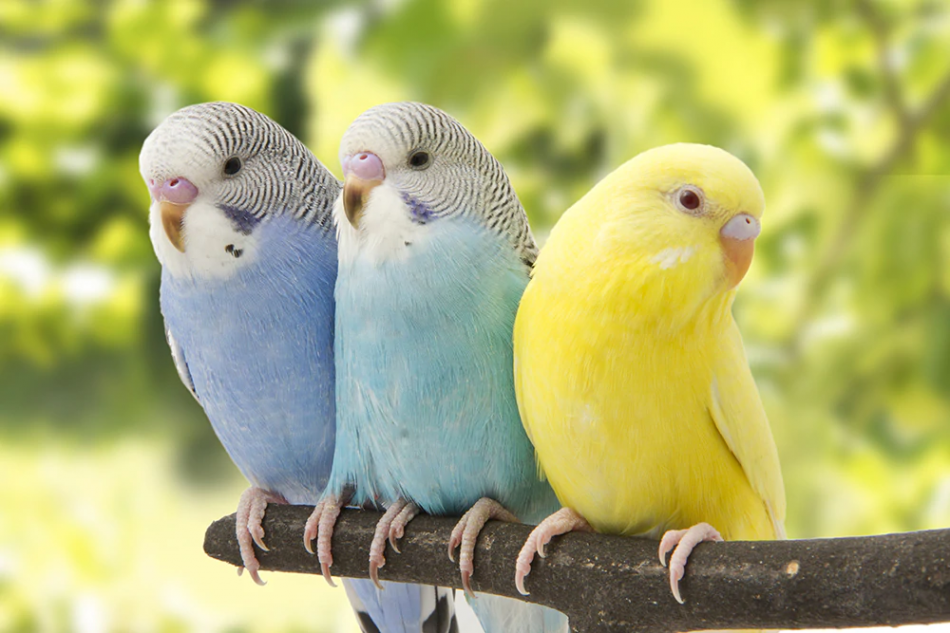
Budgerigars, also called parakeets by many, are actually native to Australia and their name comes from the aboriginal people of that region. While many people use the term “parakeet” to refer to these birds, it is actually a group of small to medium sized parrots and “budgerigar” or “budgie” is a more accurate name. As social creatures, it’s important for budgies to have plenty of interaction with their human family members or other birds. If they are kept alone for extended periods of time, they may develop depression and other mental health issues. By providing social activities and companionship, humans can form strong bonds with these intelligent and lovable birds.
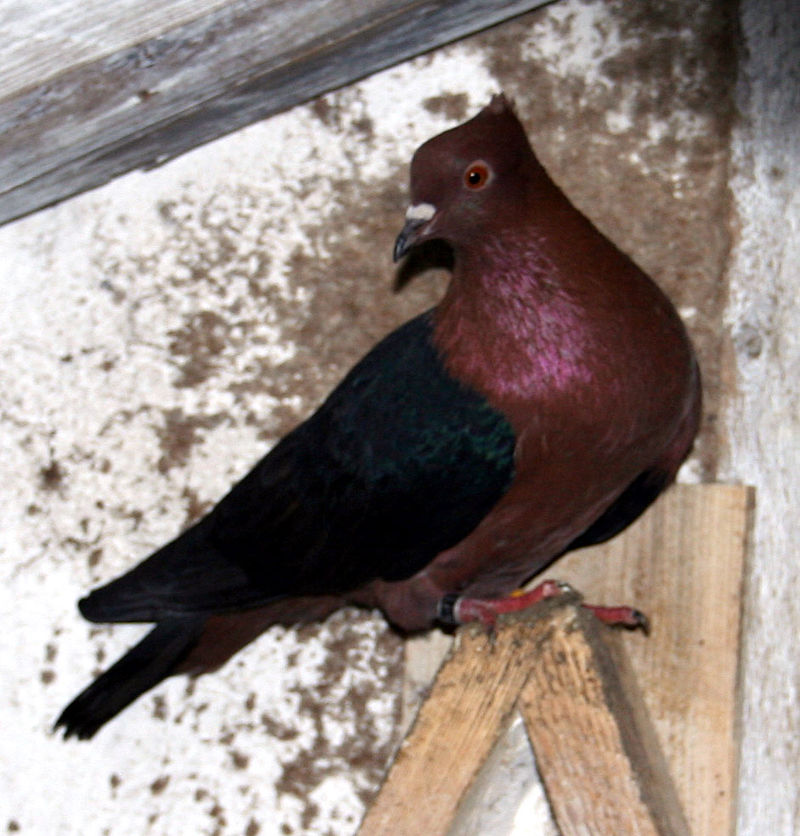
The archangel pigeon is a unique breed that has been specifically bred for its distinctive coloring. With its bronze or gold body and shimmering metallic feathers, this bird is a true beauty. Its wings come in black, white, or blue, and its striking orange eyes add to its appeal. However, it’s important to note that these pigeons are domestic birds and cannot survive in the wild. They are mainly kept as pets or used in shows as ornamental birds.
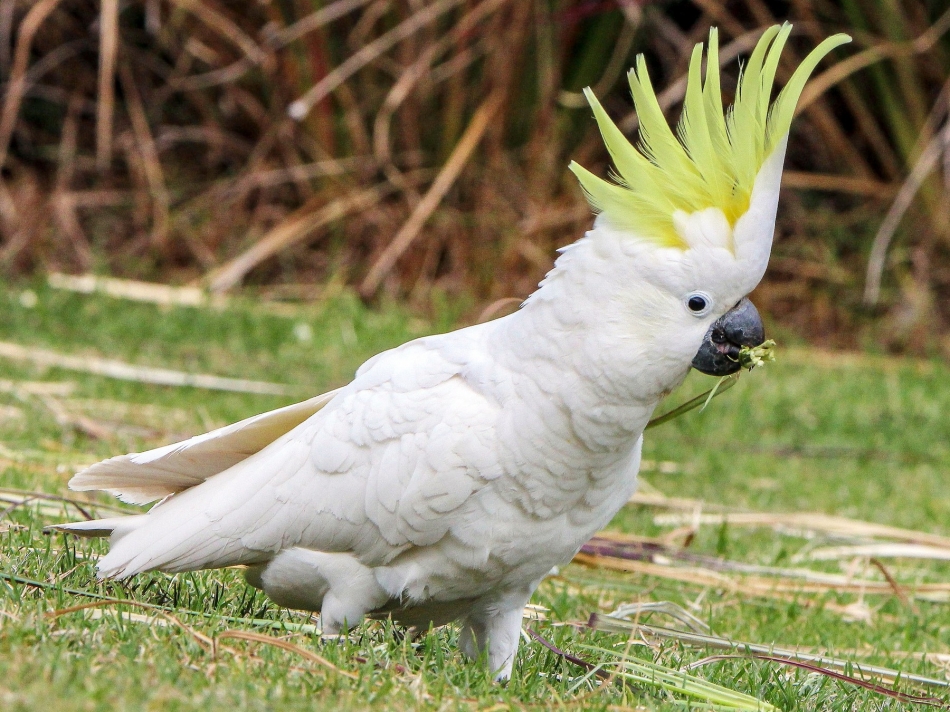
When it comes to their style, cockatoos are animals that love to grab attention and be loved. These birds easily form strong bonds with their owners and thrive on nurturing these relationships. However, if left without enough attention and care, they can become sad and start pulling out their feathers as a sign of distress. As long as they receive at least an hour or more of love each day, they will quickly become an important part of the family. In terms of their physical appearance, they typically have white feathers with pale yellow accents on their wings and tails, as well as a large white crest and black beak if they are umbrella cockatoos.
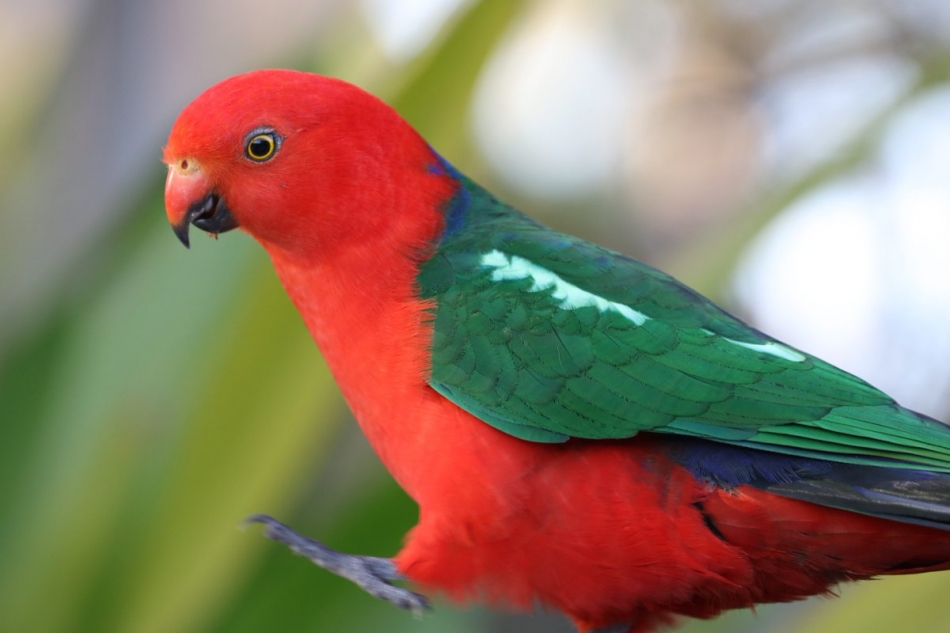
The striking appearance of the Australian king parrot makes it a popular pet choice, although it is not known for being particularly affectionate or easy to handle. Male birds are easily recognized by their bright red plumage, green wings and black tails, while females have a markedly different appearance – they are mostly green with a red belly and legs. However, one drawback of keeping these birds as pets is that they require a lot of room to move around in. Small cages will not suffice, and owners need to be aware of how to properly provide the space and environment necessary for these birds to thrive.

The black palm cockatoo is known to be one of the most sizable types of cockatoo. With its deep gray to black feathers and maroon cheeks, it is also distinguished by a tuft of feathers on its head that resembles palm leaves. It’s worth noting that individuals who own this bird species describe them as being highly dependent. The black palm cockatoo is a sociable and intelligent creature, and they may become unhappy and destructive if they do not receive the proper care and attention. Even though they used to be found commonly, their population has been significantly reduced due to habitat loss and being captured for the pet trade. Currently, they are classified as an endangered species.
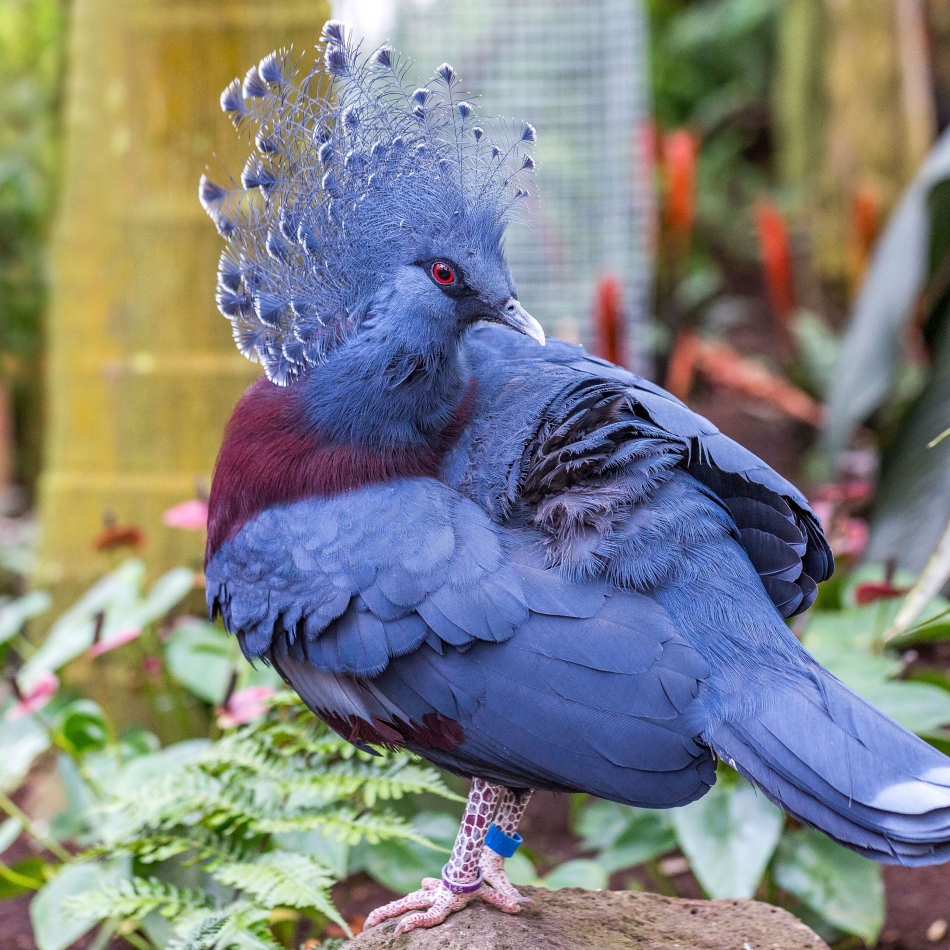
The Victoria crowned pigeon is a magnificent bird that was given its name in honor of Queen Victoria. These birds are known for their stunning plume of blue feathers on their heads and their large size, sometimes weighing up to 7 pounds. Their bodies are adorned with light blue feathers and a maroon chest, making them a sight to behold. As the largest species of pigeon in the world, they require ample space to move around and also need suitable perching spots. It’s unlikely for them to find such conditions in a typical home environment, thus, it’s best to leave them to zoos where they can be taken care of properly.
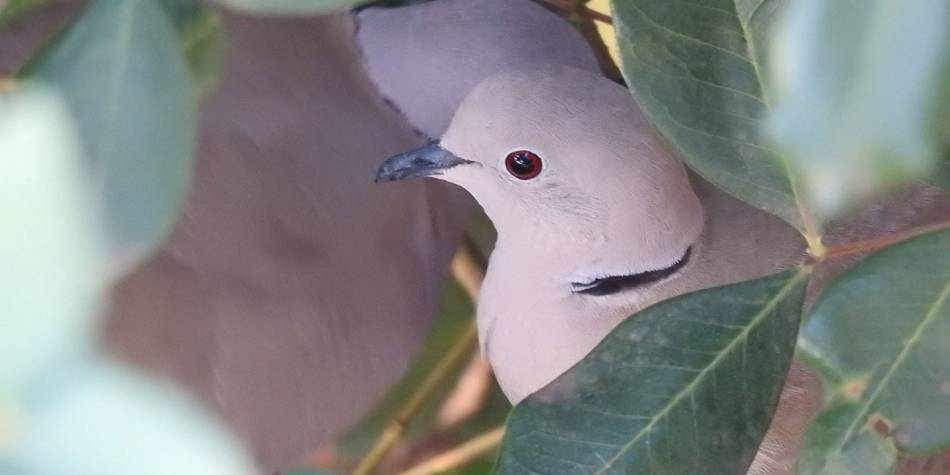
Have you ever considered owning a Ring-Necked Dove as a pet? Although they may not be as popular as other pet birds, like parrots, only 3 percent of bird owners keep doves. However, these gentle creatures would make great companions for those who want the company of a feathered friend without the high maintenance of other birds. Once they become accustomed to their owners, doves enjoy spending time with them and are very easygoing. While some dove species require more advanced care, Ring-necked doves (Streptopelia risoria) and Diamond doves (Geopelia cuneata) are two commonly kept species that are well-suited as pets. When it comes to housing, they just need a spacious cage equipped with perches, bells, and swings to keep them happy and healthy.
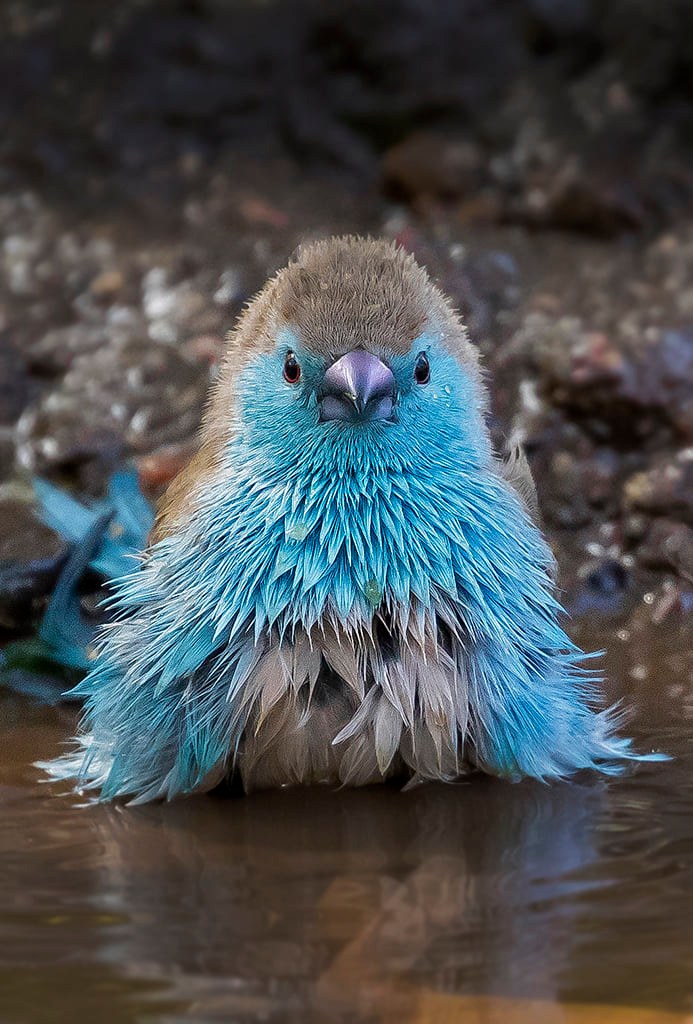
The southern blue waxbill, scientifically known as Uraeginthus angolensis, is a type of estrildid finch that can be found across Southern Africa. It goes by various names such as blue-breasted waxbill, blue-cheeked cordon-bleu, Angola cordon-bleu, and southern cordon-bleu. This species is commonly kept as an aviary bird due to its popularity. The blue waxbill’s diet mainly consists of grass seeds found in inflorescences, supplemented with termites and other insects. They have also been observed eating the fallen fruits of Boscia albitrunca. They are usually seen in pairs or family groups, but they do form larger flocks that can mix with other estrildid finch flocks.
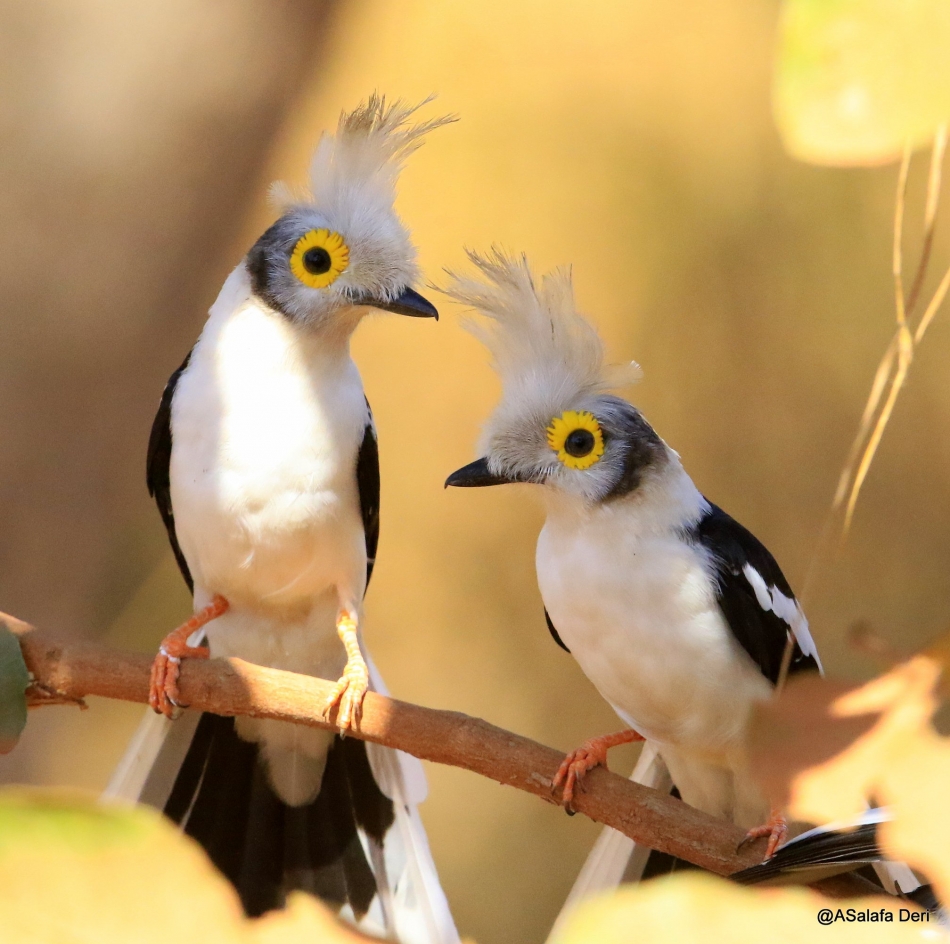
The white-crested helmetshrike, also known as the white helmetshrike, is a type of songbird that belongs to the Vanga family Vangidae. It was previously classified as part of the Malaconotidae family. This bird can be found in numerous countries across Africa, including Angola, Botswana, Cameroon, and Zimbabwe. The white-crested helmetshrike thrives in various types of habitats, such as subtropical or tropical dry forests, dry savannas, moist savannas, and subtropical or tropical dry shrublands. These birds are very sociable and tend to stay in small groups. They are always on the move, flitting through trees or scurrying on the ground while chatting noisily. If you want to see these fascinating birds in action, check out this video: https://www.youtube.com/embed/MZIQAxWQB8M
